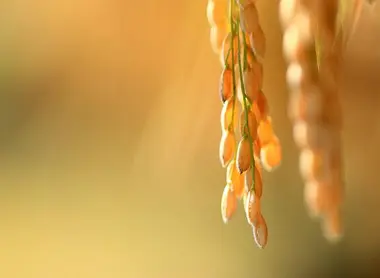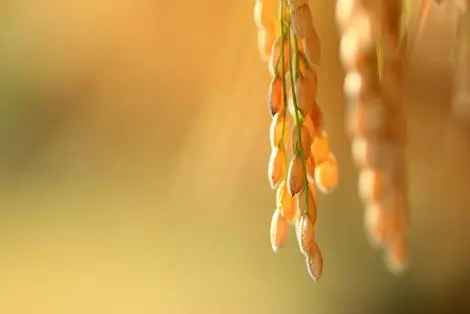"Hanami is the Japanese pastime of admiring nature while drinking sake"
Cherry blossoms: 1200 years of history
Our guide, Alain, has lived in Japan for 15 years and has a passion for the culture, history and other fascinating aspects of the country. He tells us about the origins of hanami, its meaning to the Japanese and how the custom has evolved into the cultural phenomenon it is today.
Japan Experience: What are the origins of hanami (flower viewing)?
Alain B.: We have quite a few details on the origins of this custom. It is linked to an ancient fertility rite celebrated when new sake is produced, in spring and autumn in Japanese villages. In April this ritual gave rise to a number of festivals held under the sakura (cherry trees).
JE: When was the first official hanami?
AB: In the year 812, the Emperor Saga, who was fascinated by the cherry blossoms, held the first ever hanami event in the famous garden Shinsen-in in Kyoto, and established it as a public holiday, celebrated for many, many years. Aristocrats celebrated this day first, followed by the samurai, and then finally the common people.
"Cherry trees were where the god of rice lived"
But it wasn't until the Edo period (1603-1868) that hanami became popular, and streets were lined with cherry trees and people admiring them.
JE: Where does the word "sakura" come from?
AB: There are several etymologies. The part of the word 'kura' means an ancient god of rice and harvest in the Shinto religion. This god is also associated with the kami of agriculture, Inari. Kura also means warehouse, or attic, and refers to the ancient sacred warehouses on stilts where rice was stored. The Japanese therefore believed the god of rice lived in cherry trees.
JE: Was the sakura the only tree which was used for flower viewing?
AB: No. Originally, not only the sakura but all flowering trees were admired for their beauty. If one refers to the Man'yōshū, the Collection of Ten Thousand Leaves, a Japanese poetry anthology dating back to 760, there are 43 poems on the sakura hanami, and 110 on plum blossoms. The plum tree was popular with the Chinese aristocracy, and at this time Japan drew its inspiration from the Chinese Tang dynasty. The native sakura tree was considered vulgar.
"Hanami gradually became exclusive to cherry trees"
However, in the Kokinshu, a poetry collection dating back to 905, we find around 18 poems on plum trees, whereas there were 110 poems on the beauty of sakura. In the Heian era (794-1185): Japan halted its relations with China, isolating itself and assimilating new knowledge on its own. This was also the age of gardens, including the Heian garden in Kyoto, the former imperial capital. The famous Sakuteiki, a book about garden design dating from the second half of the eleventh century, encourages the planting of cherry trees. Hanami gradually became exclusive to cherry trees.
JE: What does the cherry tree symbolise for the Japanese?
AB: The sakura symbolises relaxation, which is a breach of etiquette in Japanese society. It's the moment of the year when the Japanese, who strictly abide by a code of conduct in society, loosen up and break the social etiquette rules.
"In the 80s, the Japanese weren't interested in hanami"
Cherry trees also have a deep connection with rice and sake. Since the Nara period (710-794), it has been customary to admire sakura while drinking sake. Hanami is actually the fusion of two traditions: the admiration of nature in gardens by aristocrats, and the enjoyment of new sake.
JE: Where can you see cherry trees in the Japanese arts?
AB: Besides poetry, sakura can be found in other art forms, such as prints, in the eighteenth century. Young girls are featured drinking sake under the cherry trees. However, it is not very present in ukiyo-e, classical painting or engraving.
JE: Are there other Japanese customs comparable to hanami?
AB: Yes, hanami has its counterpart: tsukimi, or moon viewing, held when it is the most visible, on nights in late September and early October.
JE: How have you seen the custom of hanami change?
AB: When I started my career as a coach in Japan in the late 1980s, the Japanese didn't speak about hanami. They weren't interested. It was rejected, and considered a practice reserved for the elderly. The important celebrations were festivals like Tanabata, for example. In Tokyo, hanami was mostly celebrated by foreigners.
"You don't invite yourself, you get invited"
From the late 1990s, I saw it gradually becoming a trendy celebration. Young people in particular developed a passion for hanami. The once forgotten hanami has become popular once again with young people today, and we see these same young people parading in traditional clothing during summer festivals, which wasn't the case before.
JE: What advice would you give to travelers who want to see the cherry blossoms?
AB: I don't recommend that they try to blend in and do as the Japanese do, liquor bottles in hand. It won't go down well, unless they are invited to do so by the Japanese. At a hanami party people have their own group of friends or family. You don't invite yourself, you get invited. I advise travelers to simply enjoy the atmosphere.
JE: What places do you recommend?
AB: In Tokyo, which is the city I know best, Ueno Park, the Imperial Palace and along the Meguro-gawa river are good places for hanami. Meguro is an ideal area for young people, where you'll find many English speakers. In Kyoto, go to one of the many gardens in the city. Elsewhere, Himeji Castle is also highly recommended.
Find Alain and all of our tour guides, who are all Japan specialists in their field.






















